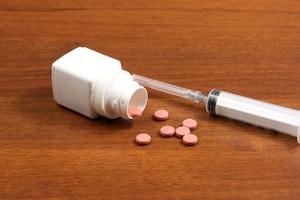Unlike people with type 1 diabetes, not everyone with type 2 diabetes needs treatment with insulin. But some people with type 2 diabetes will eventually use insulin as part of their treatment plan. You’ll need to take insulin if lifestyle changes and other diabetes medications aren’t enough to control your blood sugar. Read on for topics you should discuss with your doctor.

What Type of Insulin You Need
You can’t take insulin as a pill because your body would break it down during digestion. Liquid insulin comes in several varieties, categorized by how long each takes to begin working and how long the effects last. These range from fast-acting insulin, which works within 15 minutes and lasts 3 to 5 hours, to long-acting insulin, with effects lasting about a day.
Your doctor will recommend 1 or more types based on the timing of your meals and fluctuations in your blood glucose. If you end up taking more than 1 type at the same time, ask for instructions on exactly how to mix them into 1 syringe. Some types of insulin come premixed, blending fast-acting with longer-lasting formulas.
How Often to Take Insulin
People with type 2 diabetes often start with only 1 daily injection. You may require more or less, depending on your diet, exercise routine, and other treatments. You may eventually need up to 3 or 4 shots per day.
Insulin works to lower your blood sugar and keep it steady. To ensure you’re taking the right amount, you’ll need to test your blood glucose at home. If you don’t already check your glucose at home, your doctor can show you how to use a blood glucose monitor and interpret the results. The results give you and your doctor information about whether to change your insulin dosage.
How to Inject It
Most people who use insulin use a needle and syringe to inject the medication just under their skin. Your doctor or a diabetes educator can show you exactly where and how to do it.
Typically, you inject insulin in your upper arm, front or sides of your thighs, or your abdomen. You should inject yourself in the same body part at the same time each day, but in a slightly different spot to prevent your skin from thickening.
Other Options Besides Injections
Injecting insulin can be a problem for some people. Some are afraid of needles. Others might need a constant dose of insulin. Ask your doctor if alternative insulin-delivery devices can meet your needs. Options to discuss include:
- Insulin pens, which still involve needles but may be less painful than syringes. After screwing in a short, fine needle, you’ll push a plunger to deliver the desired dose of insulin.
- External insulin pumps, which you wear on your belt or carry in your pocket. Insulin flows through a tube to a small needle into your skin, usually in your abdomen. You’ll receive a small, continuous dose to keep your blood sugar steady and then program in a larger dose for meals.
- Insulin ports, which look like a pump without the external device. A patch or dressing holds a needle in place for several days; you’ll use a syringe or pen base to inject insulin into the port. This means you’ll only have to puncture your skin every few days instead of multiple times per day.
- Insulin jet injectors, which send a fine spray of insulin under the skin without using a needle.
How to Store Insulin
Manufacturers recommend refrigerating insulin. But injecting yourself with cold insulin can cause pain. Your doctor may advise you to store the bottle you’re currently using at room temperature and refrigerate the others. Insulin can last up to a month at room temperature.
How to Recognize an Insulin Reaction
Sometimes, insulin can cause your blood sugar to dip too low, a condition called hypoglycemia. Discuss the signs with your doctor and what to do if you experience them. Symptoms include:
- Confusion
- Fatigue and frequent yawning
- Loss of consciousness
- Paleness
- Sweating
- Twitching
Keep at least 15 grams of fast-acting carbohydrates—such as glucose tablets, a half-cup of fruit juice or regular soda, or 5 pieces of hard candy—with you at all times. Take 1 at the first sign of an insulin reaction. Also, talk with your doctor about using a glucagon kit, which works to raise blood sugar when carbohydrates alone don’t.
It’s also a good idea to let those around you, such as people you work with, know that you take insulin. Tell them what to do—like get you fruit juice or your stash of candy—in case they notice you’re having any of the symptoms above.
The Costs of Insulin
Different formulas of insulin may have different prices. If you have trouble paying for your insulin, your doctor often can help connect you with assistance programs.
Key Takeaways
It’s helpful to have a list of things to discuss when you go to a doctor’s appointment. Here’s a quick reference guide of questions to ask your doctor about starting insulin injections:
- What type of insulin do I need?
- How much does it cost?
- How often will I have to inject the insulin?
- How do I inject it? What if I can’t do it?
- What are my other options besides injecting insulin myself?
-
What symptoms and sensations should I pay attention to? When should I call 911?





